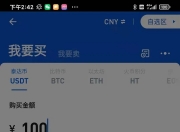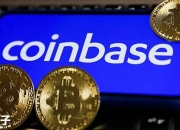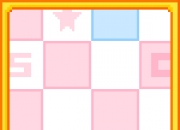想了解相关问题,可以下载报告《Web3.0完全手册:投融资·基金·监管合规》查看,以下内容都是根据该报告总结的,仅供参考。
If you wish to learn about the relevant issues, you can download the report Web3.0 Full Manual: Financing & Middot; Fund & Middot; Regulatory Compliance, which is summarized in the report for information purposes only.
Web1.0 是互联网的第一个阶段,通常 认为是自 20 世纪 90 年代开始到 21 世 纪初结束。Web1.0 时代的互联网本质 上是一组静态网页,以门户网站为代 表,用户仅可浏览不同的静态页面并 在其间导航,无法进行更多的操作,功 能相对单一。自 21 世纪初开始, Web2.0 时代的互联网开始变得更具 有交互性,使得用户可以通过互联网 生成和发布内容,用户体验更加直观、 清晰和多元。Web2.0 的代表产物包括 社交媒体、网购平台、音乐和视频共享 软件等。但 Web2.0 时代是一个中心化 的时代,用户数据被搜集和存储到第 三方平台,虽然网络效应和规模经济 造构建出了极具价值的社交图谱,但 价值只属于这些第三方平台,用户无 法实际拥有自己产生的信息和内容, 以及其带来的价值。同时,Web2.0 时 代创建的一座座信息孤岛及其岛主 (中心化的第三方平台)和岛民(用户) 之间的地位的不对等,也带来了隐私 侵犯、数据丢失、算法歧视等众多问题。
Web1.0 is the first phase of the Internet, usually thought to be the beginning of the 1990s until the end of the 21st century. The Internet essence of the Web1.0 era is a static set of web pages, based on portals, with users viewing different static pages and navigating between them, unable to do more, and can be relatively homogeneous. Since the beginning of the 21st century, the Web 2.0 era has become more interactive, making it possible for users to generate and publish content through the Internet, to experience more intuitive, clear and diverse content. The Web 2.0 era represents products such as social media, web purchase platforms, music and video-sharing software. At the same time, the Web 2.0 era is an era of centralization, where user data are collected and stored to the third-party platform, where the network effects and economies of scale have created social maps of great value, but where the value belongs only to these third-party platforms, where users do not actually have the information and content they produce, as well as the value they bring.
为防范和解决 Web2.0 带来的问题, Web3.0 应运而生。Web3.0 的本质是 去中心化的互联网,基于区块链技术 实 现 价 值 的 流 通 与 重 新 分 配 。 在 Web3.0 时代,用户的数据只属于用户 自己,而不是某个中心化的平台。 Web3.0 致力于构建用户创造、用户所 有和用户共建的“去中心化”互联网生 态,使得用户在交互中实现价值的创 造与流通。
Web3.0 was created to prevent and solve the problems caused by Web 2.0. The essence of Web3.0 is the decentralised Internet, which is based on the current value of block chain technology and the heavy new division. In the Web3.0 era, user data belonged only to users themselves, not to a centralized platform. Web3.0 is dedicated to building user-generated, user-owned and co-built & ldquao; decentralized & rdquo; Internet biotyping, which allows users to create and circulate value in interaction.
用一句话总结:Web1.0 是“只读”模式, Web2.0 是“读写+交互”模式,而 Web3.0 是“读写+交互+拥有”模式。
Summarize with one sentence: Web1.0 is & & ldquao; read-only & rdquao; mode, Web 2.0 is & & & & rdquao; mode, & & & & rdquao; mode, & & & & & & & & & ; mode.
Web3.0 时代的互联网以去中心化为 核心,旨在打造一个开放、隐私和共建 的互联网世界:
The Web3.0 era has decentralised the Internet to create an open, private and co-built Internet world:
去中心化:用户拥有去中心化身份 (Decentralized Identity),该身份 真正为用户掌握,用户行为不受第 三方限制。用户将自己的身份认证 信息,存储在完全由自己掌控的区 块链地址上;
Decentralization: the user has decentralized identity, which is truly in the hands of the user and is not subject to third-party restrictions. Users store their identity authentication information on a chain address in a zone that is entirely under their own control.
开放性:准入充分自由,用户利用 一个区块链账户地址就可以登录 链上的应用,无须注册许可,操作 便利。Web3.0 生态内基于不同区 块链平台的应用之间甚至也可以 “跨链”互通;
& nbsp; Openness: Access is fully free and the user can access the application of the chain using a block chain account address, without registration permission, for ease of operation. Web3.0 Ecologically based block chain platform applications can even be & ldquo; cross-link & rdquo; interconnectivity;
隐私性:数据只归用户所有, Web3.0 将通过应用去中心化、分 布式存储、用户私钥管理、匿名协 议等多方面保护用户数据隐私;
& nbsp; Privacy: Data are owned only by users, and Web3.0 protects user data privacy through applications that are decentralised, segmented storage, user private key management, anonymous agreements, etc.;
共建性:Web3.0 的生态建设离不 开协作,用户因共同的目标并通过 去中心化组织( Decentralized Autonomous Organization , 即 “DAO”)有序协作,制定和执行相 关组织规则,从而实现能社区共建 和自我治理。
& nbsp; co-building: The eco-building of Web3.0 requires collaboration, with users achieving co-building and self-governance through common goals and through decentralisation (decisionralized Autonomous Organization, i.e. & & ldquo; DAO”) structured collaboration to develop and implement rules of related organization to achieve community co-building and self-governance.
注册有任何问题请添加 微信:MVIP619 拉你进入群

打开微信扫一扫
添加客服
进入交流群



















发表评论